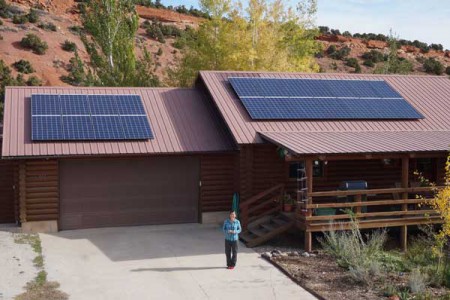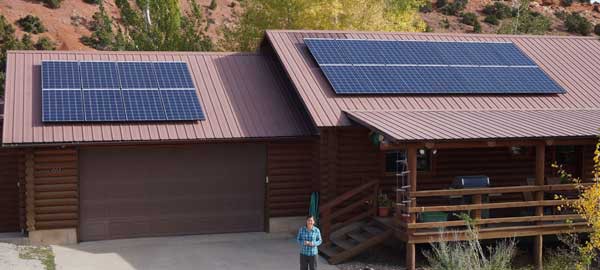300 pounds: That’s how much coal was not burned in a distant power plant in December as a result of the solar panels we installed on our house in Wyoming this fall.
Being December, it was our lowest monthly generation period, with low sun angles and periodic snow covering our panels.
An astonishing 1000 pounds of coal is burned to provide electricity for a typical US household per month.
Research shows that people most often take action on the environment based on a direct experience (Kollmuss and Agyeman 2002). In the case of climate change, ocean water isn’t lapping at our front door, nor did a hurricane recently flood our house.
Nor will we ever face these threats on the wind-swept plains of Wyoming.
But the health of the environment and our love of wildlife and open spaces is something that we care deeply about and also what drew us to settle here many years ago.
Home Solar Amidst an Energy Boom
Living in one of the epicenters fueling America’s energy boom has been a wake-up call. For the past 15 years, we’ve watched the slow unraveling of the sagebrush ecosystem: natural gas and oil extraction causing declines in species like sage-grouse and mule deer that depend on these systems (Naugle et al. 2011, Sawyer et al. 2013).
Even seemingly protected Yellowstone National Park, which sits nearly in our backyard, is warming at unprecedented rates. Recent temperatures have become as high as those experienced from 11,000 to 6,000 years ago (Shuman 2011) at a time when the concentration of carbon dioxide in Earth’s atmosphere has reached 400 parts per million (ppm), levels not seen since the Pleistocene (Pagani et al. 2010).
Wanting to join others as a part of the solution in reducing dependence on fossil fuels led us to consider installing solar panels on our home.

We studied the economics of the newest panels available and calculated that with the 30 percent federal tax incentive it would take 5 years to pay off the loan and 13 years to break even (Wyoming doesn’t have additional state tax incentives, but many states do). After that, all electricity we generated would be “free”.
Initially, I was pretty hesitant. Did it really make sense to take out a loan for solar panels or to take any “extra” money that we have for family vacations or college and put it into investing in solar?
The winning argument was to think of it like a bond fund, only we are the investors, and the project is solar on our house. When completed, our investment will result in nearly free electricity and the satisfaction of knowing that our electricity came from clean sources. Plus there’s the incalculable value of what it teaches our children. Even if we only break even financially, isn’t that still worth it?
Read more: Nature Blog
